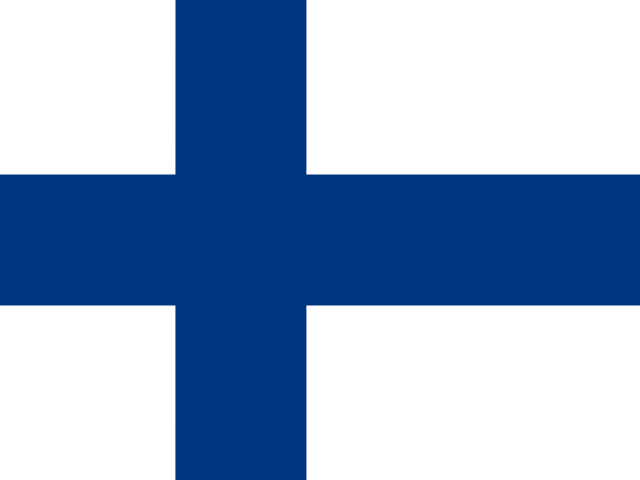
Finland
Finland’s news media environment features a strong regional press, a strong public service broadcaster (Yle), one widely read national daily (Helsingin Sanomat), and two popular evening tabloids, both reaching over half of the adult population. The shift to digital remains gradual, with digital revenues for newspapers accounting for less than one-third of their total income.1
While Google and Meta account for a significant portion of online advertising revenues, Finnish media companies are seeking ways to increase digital subscriptions. A current trend is offering customers bundles of several products, a strategy that has been successful in Sweden and Norway. In early 2025, Finland’s largest publisher, Sanoma, followed suit by introducing a new bundling offer, 'Kaikki+' (All+), which includes all 15 of Sanoma's news media, magazines, and subscriptions to streaming and audio services. The subscription costs €24.99 per month, which is only about €4 more than the most comprehensive digital-only subscription to Helsingin Sanomat. According to our survey, 16% of Finnish respondents who are not yet paying for digital news say that access to multiple news sites at a reasonable price would encourage them to subscribe. For the under-35s, the proportion rises to 25%.
Most Finnish newsrooms now use AI technologies. In addition to transcribing interview recordings, creating headlines, proofreading, and making summaries, several more advanced tools for reporters have also been developed. The evening tabloid paper, Iltalehti, uses a tool that analyses the emotional response a headline may produce in readers. Additionally, it assesses whether the piece is provocative, sad, analytical, breaking news, empathetic, questioning, useful, entertaining, or constructive. Sanoma, for its part, has developed a tool that monitors sources, such as municipal decision-making documents, to find potentially newsworthy items for their journalists.2
Danish Zetland is the main shareholder in a new Finnish start-up, Uusi Juttu (New Story), which launched in January 2025 with around 12,000 subscribers and had grown to nearly 16,000 by March. The subscribers or ‘members’ receive two news roundups and a couple of in-depth stories every day. All stories are also available in audio format. The subscription currently costs €135 per year, but those who state that they are low-income can pay less. Uusi Juttu emphasises its democratic mission and aims to provide an accessible summary of the most important news along with context, rather than a continuous news flow that could overwhelm users. According to our survey, 4% of those paying for online news subscribe to Uusi Juttu. This share is similar to that of the prestigious news magazine Suomen Kuvalehti (6%), which also aims to provide in-depth understanding of current issues.
The audio news start-up Briif ceased operations in September 2024 due to insufficient market demand. Launched in October 2023, Briif curated newspaper and magazine stories aimed at young women and delivered them in audio format. The service had contracts with several publishers in Finland and internationally.
The position of Finnish public service media Yle has been a continuous issue in Finnish media policy. Private media companies have blamed the public service broadcaster for unfair competition in the digital world, and Yle was obliged to limit its online news in text following a change in the law in August 2022. The origins of this lie in the Finnish Media Federation’s 2017 complaint to the EU claiming that Yle’s online news in text form contravened EU state aid legislation. In 2024, the Finnish Media Federation made a new complaint claiming that Yle still publishes online news in text form as it did before the law changed.
Yle has also faced political pressure, with some representatives of the nationalist Finns Party (who participate in government) accusing it of promoting a green-leftist agenda, while the government has called for funding cuts as part of broader public sector austerity measures. A parliamentary working group reviewed Yle’s public service remit, funding, and its relationship with commercial media. After difficulties in reaching agreement, the working group’s report published in September 2024, recommended a €66m cut per annum by 2027. Had the group not reached a resolution, the government would have imposed the budget cuts, making Yle susceptible to governmental pressure. Despite the cuts Yle must now implement, it retains its independence from the respective government.
In January 2025, Yle announced the closure of 309 posts, representing 10% of its total workforce and resulting in savings of €27m. Further cuts are expected.3 Yle’s half-billion-euro budget is primarily funded by the annual Yle tax, which amounts to a maximum of €160 collected from Finnish taxpayers.
Esa Reunanen
Tampere University, Finland
Changing media
The use of online news sources is unchanged at almost 90% weekly reach while television news and the printed press continue their slow decline.
Pay for online news
21%
Trust in news overall
67%
(-2)
2/48
Finnish news remains the most highly trusted among the countries in Europe, with no major changes from 2022. The news media in Finland are not politically polarised, so any politically based scepticism felt by a minority towards the news media targets all the major news brands. For others, scepticism seems to stem from an outlet’s tabloid image.

